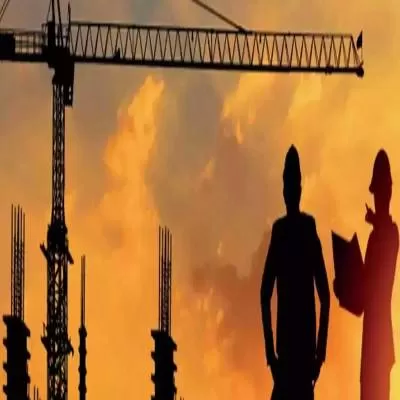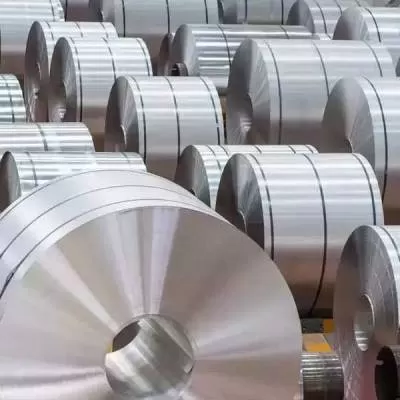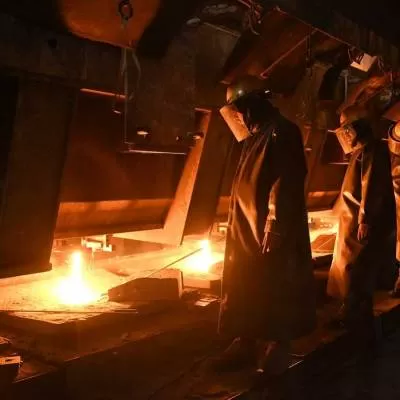- Home
- Building Material
- Steel
- A Smooth Ride
A Smooth Ride
Large road network
India has 33 lakh km of roads - one of the largest road networks in the world - of which, rural roads constitute nearly 80.3 per cent (2,650,000 km), while national highways and expressways constitute only 2.13 per cent (70,458 km). Further, almost 98 per cent of the total road network is single lane (30 per cent of the national highways and expressways are also single lane). With a burgeoning agricultural sector, there is increasing pressure on rural roads in terms of their widening and capacity improvement.
In FY2011-12, nearly 5,926 km of national highways are slated to be improved, along with the construction or rehabilitation of 130 bridges and 10 bypasses, at an estimated cost of Rs 19,600 crore. Budget 2011-12 envisages an expenditure of Rs 1,280 crore by state public works departments, and Rs 575 crore by the Border Road Development Board (BRDB) on the widening of roads from single to double lanes. Overall, the budgetary support for central sector roads in the eleventh budgetary plan is about Rs 72,530 crore.
Stable embankments
Coming back to roads, their pavements need to rest on a good, stiff embankment, through which the entire load can be transferred to the ground. As such, the stability of the embankment becomes a significant criterion. Current practice is to make a slope of approximately 1V:2H, at which a stable embankment can be constructed with almost all types of soil. In the process though, a lot of agricultural land gets wasted, which could otherwise prove to be an advantage to the nation. Hence, newer methods of construction such as reinforced soil walls and reinforced soil slopes are now being adopted in the construction of embankments, whereby vertical or near vertical embankments can be constructed, saving a great amount of productive land.
Reinforced soil walls are those where geo-synthetic reinforcement is used to stabilise the embankment, and various facing elements are used for confinement. One of the most popular is precast concrete panels, which provide excellent finishing and impart an aesthetic appeal. The main advantage of such reinforced soil walls with geo-synthetics is their flexibility to accommodate large amounts of settlement and dynamic loads coming from the traffic.
In case of reinforced soil slopes, high tensile geo-grids are used for constructing steep, stable slopes. The facing in reinforced soil slopes can be of stones like gabions, or it can be green facia like steel panels with bioengineering mats. Reinforced soil slopes are flexible in nature. The main advantage of such systems is the growth of vegetation along the embankment, which is environmentally friendly and coherent with nature.
Solid ground
Finally, the entire load is transferred to the ground on which the embankment stands, and hence, ground conditions have to be perfect to withstand the traffic. In case of soft grounds, standard practice is to replace the material with good, stiff material but that can be a very costly affair in most cases. Currently, various methods are available to improve performance on soft grounds, such as basal reinforcement techniques using geo-grids. High strength geo-grids can be used beneath the embankment over soft grounds to reduce the differential settlement as well as take care of the overall stability of the embankment.
New developments
The development of border roads is becoming increasingly important as the country expands its reach to include remote areas. Construction of roads in hilly terrains is very difficult due to the undulating profile and space availability. Moreover, landslides and rock fall disasters worsen the situation. Hence, prevention measures need to be taken prior to construction in case of hill roads. Landslides can be prevented by proper retention structures and reinforced slope systems. However, the use of gabion walls and bioengineering methods, which promotes the growth of vegetation, can be of real advantage in hilly areas.
In India, most embankments fail due to improper drainage measures, and hence, these too have to be provided during construction; however, in certain cases, it becomes very difficult and expensive to meet the requirements. In such cases, geo-textiles of small thickness can serve the purpose, where 60 cm of gravel filter can be replaced with 5 mm of geo-textiles.
While pavements are designed according to the intensity of traffic, not much attention seems to be given to reducing the ing in pavement layers. As a result, many Indian roads require heavy maintenance, which, in turn, becomes a hazard for development authorities. However, various methods are currently available to reduce reflective ing and potholes in pavements. For instance, interlayer products are now being used to reduce ing and increase the lifespan of pavements.
New material like geo-textiles can be used in roads for several purposes, including as separators between old and new pavement layers, reinforcement between sub-grade and sub-base in paved and unpaved roads, reinforcement for surface dressings, erosion control along slopes, etc.
Whether the terrain is hilly or otherwise, care should be taken to ensure that the system is eco-friendly. Reinforced soil slopes, gabion walls and rock fall protection systems are eco-friendly systems that are coherent with nature. The main advantage of such systems is that the roots of plants provide natural reinforcement to the soil, and make the system more
stable. Hence, these types of systems also require very little maintenance, going forward, resulting in reduced costs and increased durability.
Growth and infrastructure have an almost symbiotic relationship. And India being the growth driver, along with China, in recent times, the country's infrastructure is expected to grow manifold in the coming two decades. In fact, infrastructure development happens to be the 2nd largest economic activity after agriculture in India. Leading the development in infrastructure are sectors like power, ports, civil aviation, railway and roads.Large road networkIndia has 33 lakh km of roads - one of the largest road networks in the world - of which, rural roads constitute nearly 80.3 per cent (2,650,000 km), while national highways and expressways constitute only 2.13 per cent (70,458 km). Further, almost 98 per cent of the total road network is single lane (30 per cent of the national highways and expressways are also single lane). With a burgeoning agricultural sector, there is increasing pressure on rural roads in terms of their widening and capacity improvement.In FY2011-12, nearly 5,926 km of national highways are slated to be improved, along with the construction or rehabilitation of 130 bridges and 10 bypasses, at an estimated cost of Rs 19,600 crore. Budget 2011-12 envisages an expenditure of Rs 1,280 crore by state public works departments, and Rs 575 crore by the Border Road Development Board (BRDB) on the widening of roads from single to double lanes. Overall, the budgetary support for central sector roads in the eleventh budgetary plan is about Rs 72,530 crore.Stable embankmentsComing back to roads, their pavements need to rest on a good, stiff embankment, through which the entire load can be transferred to the ground. As such, the stability of the embankment becomes a significant criterion. Current practice is to make a slope of approximately 1V:2H, at which a stable embankment can be constructed with almost all types of soil. In the process though, a lot of agricultural land gets wasted, which could otherwise prove to be an advantage to the nation. Hence, newer methods of construction such as reinforced soil walls and reinforced soil slopes are now being adopted in the construction of embankments, whereby vertical or near vertical embankments can be constructed, saving a great amount of productive land.Reinforced soil walls are those where geo-synthetic reinforcement is used to stabilise the embankment, and various facing elements are used for confinement. One of the most popular is precast concrete panels, which provide excellent finishing and impart an aesthetic appeal. The main advantage of such reinforced soil walls with geo-synthetics is their flexibility to accommodate large amounts of settlement and dynamic loads coming from the traffic.In case of reinforced soil slopes, high tensile geo-grids are used for constructing steep, stable slopes. The facing in reinforced soil slopes can be of stones like gabions, or it can be green facia like steel panels with bioengineering mats. Reinforced soil slopes are flexible in nature. The main advantage of such systems is the growth of vegetation along the embankment, which is environmentally friendly and coherent with nature.Solid groundFinally, the entire load is transferred to the ground on which the embankment stands, and hence, ground conditions have to be perfect to withstand the traffic. In case of soft grounds, standard practice is to replace the material with good, stiff material but that can be a very costly affair in most cases. Currently, various methods are available to improve performance on soft grounds, such as basal reinforcement techniques using geo-grids. High strength geo-grids can be used beneath the embankment over soft grounds to reduce the differential settlement as well as take care of the overall stability of the embankment.New developmentsThe development of border roads is becoming increasingly important as the country expands its reach to include remote areas. Construction of roads in hilly terrains is very difficult due to the undulating profile and space availability. Moreover, landslides and rock fall disasters worsen the situation. Hence, prevention measures need to be taken prior to construction in case of hill roads. Landslides can be prevented by proper retention structures and reinforced slope systems. However, the use of gabion walls and bioengineering methods, which promotes the growth of vegetation, can be of real advantage in hilly areas.In India, most embankments fail due to improper drainage measures, and hence, these too have to be provided during construction; however, in certain cases, it becomes very difficult and expensive to meet the requirements. In such cases, geo-textiles of small thickness can serve the purpose, where 60 cm of gravel filter can be replaced with 5 mm of geo-textiles. While pavements are designed according to the intensity of traffic, not much attention seems to be given to reducing the ing in pavement layers. As a result, many Indian roads require heavy maintenance, which, in turn, becomes a hazard for development authorities. However, various methods are currently available to reduce reflective ing and potholes in pavements. For instance, interlayer products are now being used to reduce ing and increase the lifespan of pavements.New material like geo-textiles can be used in roads for several purposes, including as separators between old and new pavement layers, reinforcement between sub-grade and sub-base in paved and unpaved roads, reinforcement for surface dressings, erosion control along slopes, etc.Whether the terrain is hilly or otherwise, care should be taken to ensure that the system is eco-friendly. Reinforced soil slopes, gabion walls and rock fall protection systems are eco-friendly systems that are coherent with nature. The main advantage of such systems is that the roots of plants provide natural reinforcement to the soil, and make the system more stable. Hence, these types of systems also require very little maintenance, going forward, resulting in reduced costs and increased durability.
























